Is Filipino cuisine inferior? Only popular ingredients are vinegar and sugar? I beg to disagree. We have lots of wonderful food items here in the Philippines! You just have to look closer - explore. So here I present to you some of our products. From raw to processed, to most common to rare. Most are indigenous, but there are also ingredients which are just introduced to us but have become part of our food heritage (indigenized/naturalized). Our ingredients and products are very diverse. If I include more dishes we might not be finished.
Tabon-tabon (ta-bon tá-bon)

Tabon-tabon (atuna racemosa) is traditionally used for the preparation of kinilaw‡ in Northern Mindanao. The pulp of tabon-tabon has an astringent taste that neutralizes the acidity of vinegar and removes the "lansa"(fishy smell) of fish .
Do you know we already had kinilaw in the pre-colonial Philippines? The remains of tabon-tabon fruits and fish bones have been recovered from the Balangay archeological excavation site in Butuan (dated c. 10th to 13th century AD). This amazing discovery proves that pagkikinilaw is a thousand years old practice!

Tultul (túl-tul)

Artisanal salt blocks of Hoskyn, Guimaras. This salt is treated as a viand by locals. These salt blocks are produced by Emma and Serafin Ganila, two of the few remaining tultul salt masters of Guimaras. It is made with ashes of assorted driftwood (dagsa) doused with seawater for several days. Ashes are collected and placed in a filter called kaing, this serves as a strainer for new seawater. Strained water are boiled in hurnohan (oven). The salt-makers add coconut milk to the liquid for added savory flavor.
Gamet (ga-mèt)

Ilocandia's Nori or "black gold" of Sta. Praxedes, Cagayan. It gives umami flavor to dishes. Best for soups, stews, or salads.
Ominio (o-mi-nyo)

A native variety of sticky/glutinous rice from the Rice Terraces of Cordillera. This variety has chocolaty taste and aroma. Typically used for champorados (porridge) and rice cakes.
Nata de coco (na-ta de kó-ko)

This translucent jelly-like food is ubiquitous in Asian cuisine. You can find this from desserts to beverages. But, do you know that Nata de Coco was invented in the Philippines? This unique Filipino specialty made from fermented coconut water was invented by a Filipina chemist Teodula K. Kalaw in 1949.
So, the next time you drink Mogu Mogu or chew the nata sinkers in your milk tea, remember that a Filipina invented this—an invention that is now enjoyed by various regions across Asia and beyond.
Landang (lan-dang)

Landang (natiove tapioca) is sourced from Buri tree‡, a type of palm native to the Philippines. It's uneven and lumpy, very different sa usual sago. Used for binignit⸸ in Visayas and some parts of Mindanao.


Imbuucan (im-bu-ù-kan)

Heirloom brown rice from the Rice Terraces of Cordillera.
Innawi (in-na-wi)
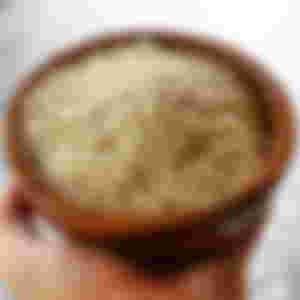
Another heirloom rice from the Rice Terraces of Cordillera. Inawi's short and round medium grains absorb flavors, making it ideal for risotto.
Natek (na-tek)

Nipa starch from Mindanao. Sauce thickener. Use this instead of the ubiquitous cornstarch.
Ilocos fine salt in burnay jar.

You can get this sea salt and burnay salt jar at The Syquia Mansion.
Palapa (pa-lá-pa)
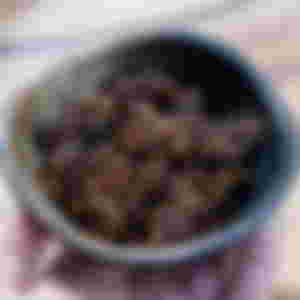
Maranao condiment. Made from thinly chopped white scallions (sakurab); pounded ginger (luya pagirison), turmeric (kalawag), labuyo chili (luya tiduk), and toasted grated coconut (niog).
Traditional Philippine vinegars

From left to right:
Sukang Kaong (su-kang ka-óng)
Sugar palm vinegar. Also known as sukang irok.
Sukang Sasa (su-kang sa-sá)
Nipa palm vinegar. Also known as sukang nipa and sukang paombong. Nipa palm vinegar is listed in the Ark of Taste international catalog of endangered heritage foods.
Sukang Tuba (su-kang tu-bâ)
Coconut wine vinegar.
Sukang Iloko (su-kang i-ló-ko)
Ilocano vinegar made from basi (sugarcane wine).
Actually the first three vinegars looks so similar and has distinctive taste.
Tuyong Kamias (tu-yóng kam-yas)

Averrhoa bilimbi, or bilimbi, is widely called kamias in the Philippines and “cucumber tree” or “tree sorrel” in English. Kamias gives a sour flavor to dishes. The fruits can also be eaten raw, dipped in rock salt, transformed into juice or relish or pickled. Kamias is also sometimes used as a substitute for tamarind. The tree was once quite widespread throughout the Philippines, but now is found mainly in rural areas and only rarely in household gardens. Although Kamias was once considered a basic ingredient in most local soups and fish dishes, it has been replaced by instant broth mixes and its uses forgotten by many home cooks.
*Kamias is listed in the Ark of Taste international catalog of endangered heritage foods.
Kamias is endangered as food. It is not widely cultivated and only exists in backyards and in the wild. The rise of instant mixes substitutes the use of Kamias as souring agent.
Kalumpit (ka-lum-pit)

Fruit from our native tree. The fruiting season is from May to June. Good for making jam and juice.
Kalumpit is different from duhat, seriales, and lipote.
Kalingag (ka-li-ngag)

There are around 25 known species of Cinnamomum in the Philippines, of which 18 are endemic or only found in our country. The cinnamon barks in the photo are from Cinnamomum mercadoi. Locally, kalingag has been used for medicinal purposes. Compared to other cinnamons, our endemic species are less studied and utilized. Moreover, C. mercadoi is currently listed in the International Union for Conservation of Nature (IUCN) Red List as "vulnerable" due to the continuous loss of Philippine forests.
Kalingag makes a good tea or can be used to flavor puddings or savory dishes that use cinnamon or anise (such as humba, asado, Visayan adobo).
Balikucha (ba-li-kùt-tsa)

Palmier-shaped muscovado candies from Ilocos region. Made from raw sugarcane syrup. Can be eaten as it is, or as a sweetener for tea, coffee, or hot tablea (Cacao) drink. Healthier alternative to normal refined sugar.
Asin tibuok (a-sín tibu-ok)

Artisanal salt from Alburquerque, Bohol. It has sharp smokey taste and faint fruity flavor. You can powderize this and use as a regular salt (for dishes, extra flavor for vinegar etc.) or break it into big chunks for dipping it to porridges (unique method to taste). Or grate a large chunk over food, as a finishing salt. This method is so hard, soaking the coconut husk in salt water for months. Dry it until the salt water is absorbed. After that, the coconut husk will be burned and the ash will be collected and placed in the filtering system and then used with salt water again. The distilled salt water is placed in small clay pots (called kolun kun), and it is boiled for a long time until it is full of salt.
Pako (pa-kò, Capampangan; pá-ko, Ilonggo; pa-kó, Tagalog, Waray, Cebuano, Bicolano)

An edible fern. Mostly used as an optional ingredients for vegetable salads.
Minaangan (mi-na-a-ngan)
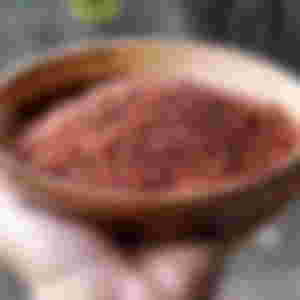
Another heirloom red rice from Cordillera.
Pili (pi-li)

Pili (canarium ovatum) is native to the Philippines. There are no other major producer of Pili in the world aside from Philippines. The only nation that cultivates Pili for commercial/culinary use. Production centers of Pili nuts are located in Bicol Region, Southern Tagalog, and Eastern Visayas. The harvest season of nuts is from May to October and peaking between June and August.
Calamansi (ka-la-man-sî)
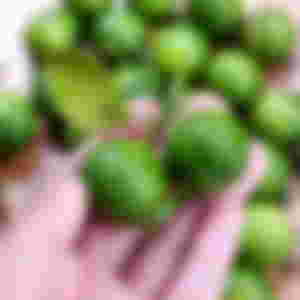
Also known as philippine lemon, philippine lime, calamondin, lemonsito, kalamunding. A natural hybrid lime, with kumquat in the parentage. The Philippines is the only major producer of calamansi in the world. MIMAROPA Region is the top producer of calamansi in the Philippines.
Biasong (bi-ya-sóng)

Wild citrus from the papeda group, native to southern Philippines. This is different from dayap. Dayap (key lime) is a citrus hybrid (C. hystrix x C. medica). Dayap is smoother and rounder, while biasong is lumpier.
*Some places/people in Mindanao referred this as "suha".
Dayap (da-yap)

Key lime. Extract is best for sawsawan (dipping sauce); it'gurgurys aromatic rind can be used in tibok-tibok‡, gurgurya⸸, leche flan†, etc.



Local tablea (tab-le-ya) and cocoa nibs.
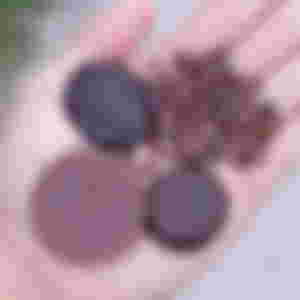
Philippine cocoa industry has been the primary producer of cocoa beans in the Southeast Asia. Production centers of cocoa are in Cebu, Negros, Davao (chocolate capital of the Philippines) and Batangas.
Sampalok (sam-pa-lok)

Food souring agent. Best known ingredient for "sinigang".
Buy-o (bûy-o)

A traditionally made sea salt in woven palm leaves from Botolan, Zambales.
Danggit (dáng-git)

Dried fish from Bantayan Island in Visayas.
Panutsa de bao (pa-nút-tsa de ba-o)

A rare delicacy during Christmas season and newer generations today, vaguely know this food.
Bignay (big-nay)

Also known as bugnay. Bignay berries can be used in wine making, jame, or as a souring agent (if unripe). Immature fruits are white, while ripe fruits are darker in color (dark purple, almost black).
Bagbagkong (bag-bag-kong)

Tonkin jasmine. Can be used in vegetable dishes such as pinakbet†, dinengdeng munggo‡. Can be used as additional filling for lumpiang shanghai⸸. Also known as sabidukong (Ilocano), tirintintin (Ilocano), ampupuyat (Ilocano [Piddig, Ilocos Norte]), pusa-pusa (Ilocano [Batac, Ilocos Norte]), dukep (Ilocano [La Union]), sabsabidukong (Ilocano [Novo Viscayano]).

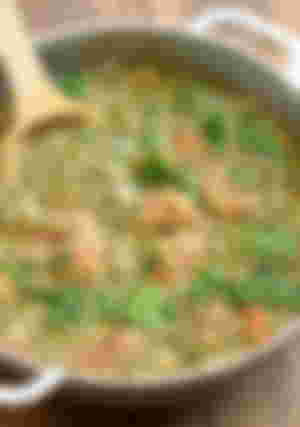

Tuyong dahon ng gabi (tu-yóng da-hon- nang ga-bi)

Primary ingredient for laing‡.

Kadyos (kad-yos)

Pigeon pea. Ingredient for the Ilonggo's KBL (Kadyos, Baboy, Langka)‡. Kadyos can be green, dark purple, or black.
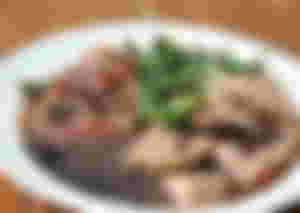
Closing Remarks
There are many rare raw ingredients in the Philippines that I haven't been found yet. I'll be updating this list from time to time.
I also post my compiled recipes that I kept during my teen years in Cooking Recipe Community or visit my Articles.
I am currently fighting lung cancer so expect a longer time for me to post here. I only post food related topics as I love to eat almost different cuisine (native food are the best). I missed the reddit days for blogging and now, I will contribute my remaining time writing here in read.cash. (Not to mention all I'll earn from this site will go to my medicational needs)
Thank you for reading my article and may the Lord bless us everyday with goodness.











































These are a lot of ingredients that I never heard of. Calamansi is the most common ingredient I have used.